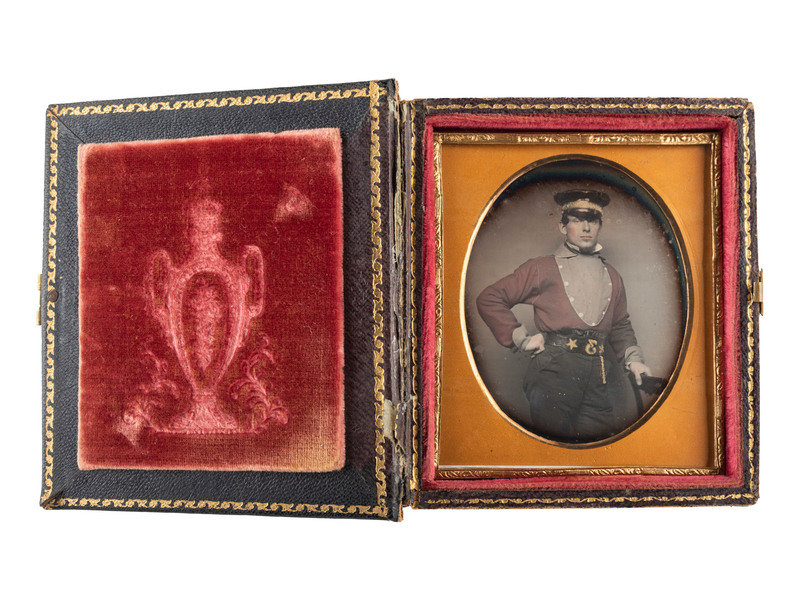Lot 555
[EARLY PHOTOGRAPHY] -- [FIREFIGHTING]. Sixth plate daguerreotype of identified New York firefighter, Frederick W. Denecke. [New York?]: [1850s].
Sale 960 - American Historical Ephemera & Photography
Nov 15, 2021
11:00AM ET
Live / Cincinnati
Own a similar item?
Estimate
$2,500 -
3,500
Price Realized
$5,000
Sold prices are inclusive of Buyer’s Premium
Lot Description
[EARLY PHOTOGRAPHY] -- [FIREFIGHTING]. Sixth plate daguerreotype of identified New York firefighter, Frederick W. Denecke. [New York?]: [1850s].
Sixth plate hand-colored and gilt daguerreotype. (Some tarnishing to perimeter, image re-sealed.) Housed in full gilt leather book-form case with thistle, rose, and foliate design (minor wear to hinge). Plate maker's marks on lower right to plate verso: rosette, lamb flanked by crescent moons and "Double JP," and "40" silver content sign. The plate mark is nearly identical to that of the brothers Marc Antoine and Alexis Gaudin except the central mark bears "JP" rather than "Gaudin." Seen in an 1851 Southworth & Hawes example, but otherwise unidentified. Handwritten note behind plate identifies the subject: "Frederick W. Denecke in Volunteer Fireman's Suit of the City of New York." A curious image given that the subject's uniform shirt is not consistent with known examples representing New York City firefighters of the period.
The subject confidently poses, one hand on the back of a chair and the other on his hip as he gazes directly at the camera. He wears his volunteer uniform bib-front shirt with a stiff collar. His hat features an ornate band his belt is adorned with stars and the number 3. The image is exquisitely colored and gilt enhancing the unique details of the subject's attire.
The 1855 Census lists Frederick Denecke (b. ca 1831) as 24 years old and living with his family who are listed as owning a public house. Frederick is listed as a porter and in the 1857 New York City Directory as working with shoes. It is, however, not unusual that Frederick would have other professions listed in these records as firefighting was entirely a volunteer operation in 1850s New York. Fires were common and deadly and in response, large groups of working-class young men formed volunteer brigades. These groups formed strong fraternal bonds and community ties, though also had the occasional tendency to become territorial and gang-like. It was not until 1865 that a professional fire department was formed and the volunteer groups were abolished.
Condition Report
Contact Information
Auction Specialist





